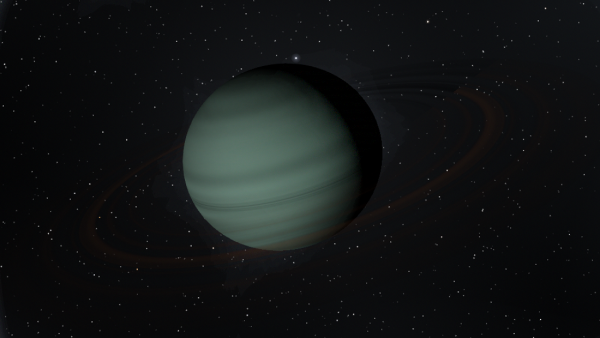BY LETTER
Akela (Wolf 359)
Galactography > Regions of Space > Inner Sphere
Galactography > Other Major Polities, Empires, and Meta-Empires > Solsys Organization
Galactography > Systems and Worlds > Systems & Worlds A - B
Galactography > Other Major Polities, Empires, and Meta-Empires > Solsys Organization
Galactography > Systems and Worlds > Systems & Worlds A - B
The Akela System, home of the Chandelier | |
 Image from Steve Bowers | |
| The Chandelier, a mysterious artifact left behind in this system | |
Akela System - Data Panel | |
| System | Location: - Distance from Sol: 7.856 ly (J2000) - Constellation: Leo |
|---|---|
| Star | Names: Akela, CN Leonis, Gliese 406 (GJ 406), Wolf 359 Physical characteristics: - Mass: 0.110 x Sol - Radius: 0.140 x Sol - Luminosity: 0.00113 x Sol (bolometric) - Temperature: 2,831 Kelvin - Spectral type: M6 Ve - Rotation period: 2.72 days - Age: 350 million years System: Akela and its planets are apparently named after lupine characters in an old Earth fiction work Jungle Book (the identity of the author, only known by the name 'Klippings' and a number of variant spellings of, was debated). 1) Leela: Videntian AcidiTerrestrial CereYdratian AquaCytherean Semi-major axis = 0.018 AU, Orbital period = 2.687 days, Eccentricity = 0.15, Mass = 3.8 x Earth, Radius = 1.785 x Earth 2) Raksa: CryoazuriJovian CereJotunnian HydrogeoBarian Semi-major axis = 1.845 AU, Orbital period = 8.044 years, Eccentricity = 0.04, Mass = 43.9 x Earth, Radius = 7.247 x Earth |
| Colonised | The system was first reached in approximately 450 AT by ahuman AIs, which are believed to have left Solsys around 335 AT. A beamrider mission arrived in 628 AT and began construction of a boostbeam station soon afterwards. |
 Image from Steve Bowers | |
| Raksa, a cold Neptune-like planet | |
The Akela system is a Solsys Organisation protectorate. It possesses a minor Synthetic Human colony on one of the moons of Raksa, but is otherwise uninhabited. The system is best known as the location where the first example of the ahuman-built objects commonly known as the Chandeliers was discovered.
When the first Beamrider Network explorers arrived, they discovered "The Chandelier", a 40 kilometre long diamondoid structure of unknown purpose. At first the Beamriders believed it was an alien artifact, but a more detailed investigation revealed the remains of fabricators derived from Terragen designs. It was eventually concluded that the structure had been built by an autonomous AI of Terragen origin that had gone rogue. Since then "chandeliers" and the rarer "wineglasses" have been discovered in several nearby systems, revealing the passage of a front of exploring/colonizing ahuman AIs that apparently left the Solar System during the Interplanetary Age.
Related Articles
Appears in Topics
Development Notes
Text by Anders Sandberg
additional material by Steve Bowers and The Astronomer, 2022
Initially published on 12 December 2001.
additional material by Steve Bowers and The Astronomer, 2022
Initially published on 12 December 2001.






